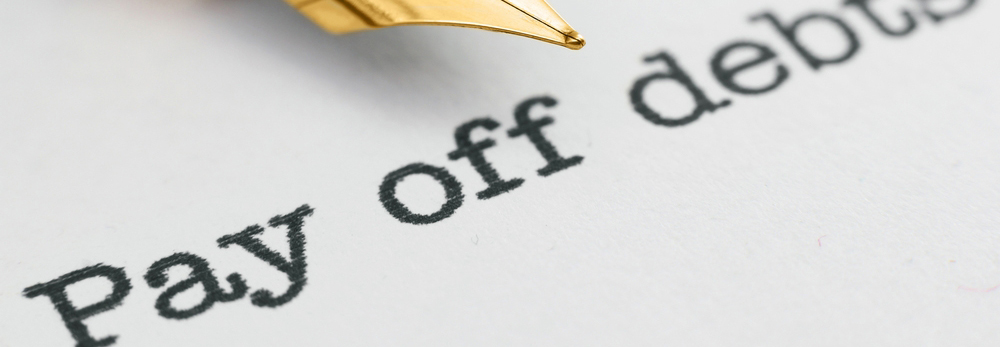
Discover Your Ideal Refinancing Solution Tailored to Your Unique Circumstances
Refinancing your home loan can help your finances in myriad ways, but it’s a complex topic for anyone to understand, with factors consistently shifting, all influencing the interest rates and terms you’re eligible for. Elements such as your credit score, existing loan balance, and the type of refinance you’re seeking are just some of the factors that come into play. Let us help simplify this journey for you by connecting you with lenders who understand your specific needs, and who might provide the optimal refinancing solution. Your path to financial flexibility and improved cash flow starts here.



The Question of the Day: Where Are Rates Headed?
Recently, the Federal Reserve has increased the Effective Federal Funds Rate (EFFR) as a way to curb inflation in the United States. This is the rate at which banks can borrow money, which then turn around and lend money to individuals, businesses, and even other types of lenders.
Mortgage rates have increased quite a bit because of this. While this has helped bring prices down in some metro markets across the country, it has also made mortgages more expensive.
Predicting where rates are going is impossible, but targeting lower rates to spur economic growth is certainly something the Fed will have its eyes on in the future.
Unraveling Your Refinance
Understanding the breakdown of your refinancing payment is crucial in ensuring you have a good handle on your financial future. Your refinance payment is composed of the principal and interest, which constitute the most substantial portion. The principal is the amount you’re borrowing to cover your existing loan, while the interest is the fee you pay to the lender for this facility. You may also be required to contribute to an escrow account monthly, which the lender uses to cover property taxes and insurance premiums.
Typical Elements of a Refinance Payment
Principal
This is the amount of money you’re borrowing to pay off your original loan.
Interest
This is the cost charged by the lender for the privilege of borrowing their money. Interest rates are usually stated as an annual percentage.
Property Taxes
Your property is subject to an annual tax levied by the local government. If you have an escrow account, each monthly payment includes a portion (typically one-twelfth) of your yearly tax bill.
Insurance for homeowners
Homeowner’s insurance covers damages from various incidents such as fire, storms, and theft. Depending on where you live, you might need additional coverages like flood or earthquake insurance. Just like property taxes, you pay a fraction of your annual insurance premium each month, which your lender or servicer pays when due.
Mortgage insurance
If your home equity is less than 20%, you may be required to pay mortgage insurance. This will be incorporated into your monthly refinance payment.


Deciding How Much House You Can Afford
Following the tried-and-true 28/36 percent ratio if you’re not sure how much of your salary should go toward housing. Most financial counselors agree that people should spend no more than 28% of their gross income on housing (i.e., your mortgage payment) and no more than 36% on overall debt, which includes mortgage payments, credit cards, school loans, medical bills, and other debt. Here’s an example:
“Joe” is paid $60,000 per year. This equates to a gross monthly income of $5,000. Total monthly mortgage payment: $5,000 x 0.28 = $1,400 (PITI)
Joe’s total monthly mortgage payments should not exceed $1,400 per month, including principal, interest, taxes, and insurance. This equates to a maximum borrowing amount of $253,379 dollars. Although you can qualify for a mortgage with a debt-to-income (DTI) ratio of up to 50% for some loans, if you strain yourself too thin, you may not have enough wiggle room in your budget for other living expenses, retirement, emergency savings, and discretionary expenditures.
When lenders pre-approve you for a loan, they don’t take those budget items into consideration. You’ll have to factor them into your own housing affordability picture. Knowing what you can afford can assist you in making wise financial decisions. Even if a lender is ready to lend you the money, the last thing you want to do is commit to a 30-year home loan that is too pricey for your budget.
How to Lower Your Monthly Mortgage Payment
If the monthly payment shown in our calculator appears to be too high, you can attempt several strategies to lower it. Experiment with a few of these options:
Choose a loan with a longer term
Your payment will be lower if you borrow for a longer period of time (but you will pay more interest over the life of the loan).
Spend less money on your property
A reduced monthly mortgage payment is the result of borrowing less.
PMI should be avoided at all costs
A 20% down payment (or, in the case of a refinance, equity of 20% or more) eliminates the need for private mortgage insurance (PMI).
Look for a loan with a lower interest rate
Some ultra-low rates demand you to pay points, which is a one-time fee.
Increase your down payment
This technique is used to cut the loan’s size.



